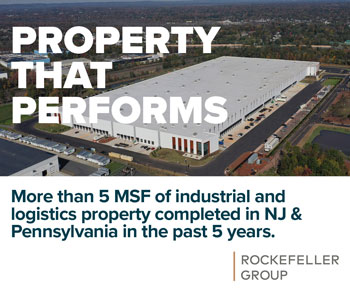Technology and construction industry experts have increasingly touted the use of digital, cloud-based platforms to both improve productivity and manage costs in the building process, especially in a time of rising costs and labor shortages.
By Joshua Burd
Lilian Pacheco joined Russo Development in summer 2018. By then, the Carlstadt-based firm had already started to ramp up its pipeline of multifamily projects across the state, paving the way for what will be several thousand apartments under construction in the years ahead.
That made it all the important for the developer to automate its process for purchasing, accounting and other functions related to managing those job sites.
“It was done very manually,” said Pacheco, Russo Development’s vice president and property controller. “As the projects were added on — and we have several projects in the pipeline — I would have had to add several people to continue that very manual process.”
The firm would spend the next year or so implementing a sweeping construction management software — in this case, Procore — highlighting a need that other builders have addressed or should address as a way to improve their business. In recent years, experts have increasingly touted the use of digital, cloud-based technology to both improve productivity and manage costs in the building process, especially in a time of rising costs and labor shortages.
“Digital collaboration tools seek to tackle the day-to-day inefficiencies of working in the construction industry — both in the office and on the job site,” Harry D’Esposito, a senior research analyst with JLL and head of its construction research practice, wrote in a 2019 report. “These tools are generally built around a cloud-based platform that allows anyone to access and update blueprints, (computer-assisted design) files, punch lists, schedules and any other critical project documents from any location.
“Digital collaboration tools are among the most mature sectors within the construction tech umbrella.”
The pandemic has only magnified the need for such innovations.

“There’s lot of paperwork that moves from a job site to an office and then moves around the office,” said Michael Mullin, president of Totowa-based Integrated Business Systems, which sells and advises clients on construction, property management and IT software. “Moving that paperwork is much more difficult in a ‘work remotely’ environment, so there’s a lot of angst around keeping systems up to date and knowing what’s really going on.
“If you’re working with your older systems, it’s a slower process to really know what’s happening in your business.”
One of the heavyweights in construction management software, Procore Technologies Inc., has deployed its platform to more than 1 million projects and for more than $1 trillion in construction volume, according to the company. The 18-year-old, Carpinteria, California-based business has raised hundreds of millions of dollars since 2015 and considered going public earlier this year, in another sign of its impressive growth before the onset of the pandemic.
Russo’s switch to Procore in 2019 has simplified the process starting as early as the bidding stage, Pacheco said. Like others that have adopted the software, the developer uses Procore to solicit, accept, review and approve bids from subcontractors. Those bids remain in the system’s workflow when they are converted to contracts and work their way through several layers of approval by members of the firm’s construction and management teams.
“If for some reason he doesn’t like something on the contract, he can reject it back to the subcontractor using Procore, with comments,” said Pacheco, who implemented the platform at her previous company. “And the subcontractor gets the alert, they then go in and make the necessary changes and pushes it forward once again.”
The contract “goes through the entire workflow in that fashion until it gets to the final approver,” who can then sign the document electronically and instantly notify those who need to know, she said. With that, the subcontractor can begin to bill against the contract.
The software has also streamlined payment to subcontractors — who submit their bills and change orders through Procore — by recording the dates of the submission and of when they are reviewed and processed by Russo’s team, Pacheco said. What’s more, the automated system helps to minimize mathematical errors and other issues with manual reconciliation that can lead to overbilling on a project.
“It’s traceable, it’s trackable and it removes so much of the data entry, the confusion, the lost emails,” Pacheco said. “And, most importantly, we didn’t have to add a whole department just to process the construction, from the contract management to the billing process.”
Mullin, whose firm sells construction accounting software under the cloud-based Acumatica platform, said the technology can help maintain communication between the supervisors in the field and the accounting and operations team. That can “ensure that what’s going on at the site is reflected in what’s going on in the systems in real time” and lead to savings in several areas: making sure subcontractors are approved before they do the work, approving change orders efficiently and ensuring timely billing.
He noted that “we’ve had solutions for different jobs within the business for a long, long time,” but those systems haven’t always worked hand in hand. For instance, he noted that he’s been selling accounting job cost software since the 1980s, but at the time the programs “really didn’t have a whole lot to do with what was going on” in project management and estimating.
“Each of those systems has gotten better and better and better over the last few decades,” Mullin said. “But I’d say over the last seven to 10 years is when we’ve really been able to couple them together and actually see them work pretty seamlessly as one stack of applications that talk behind the scenes.”










